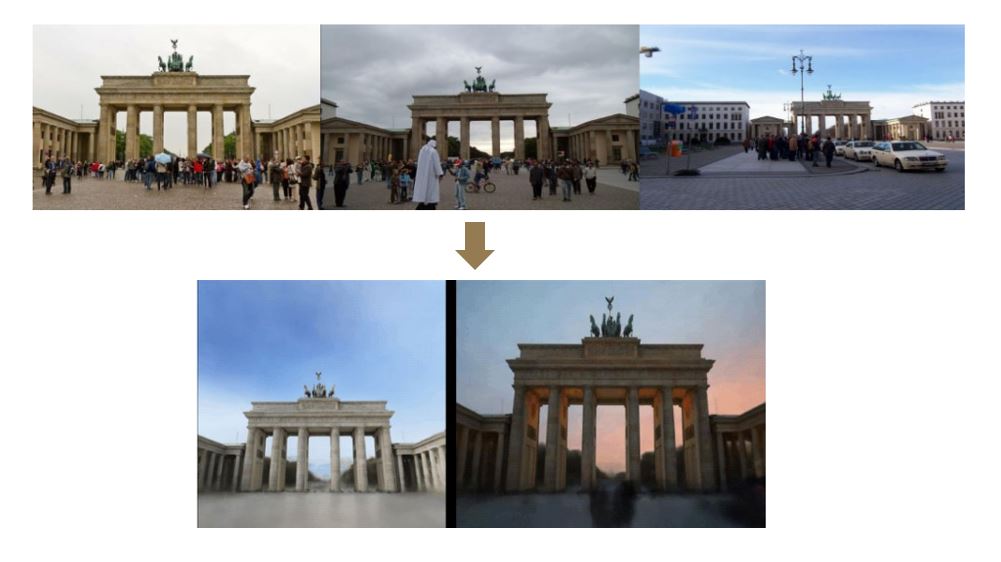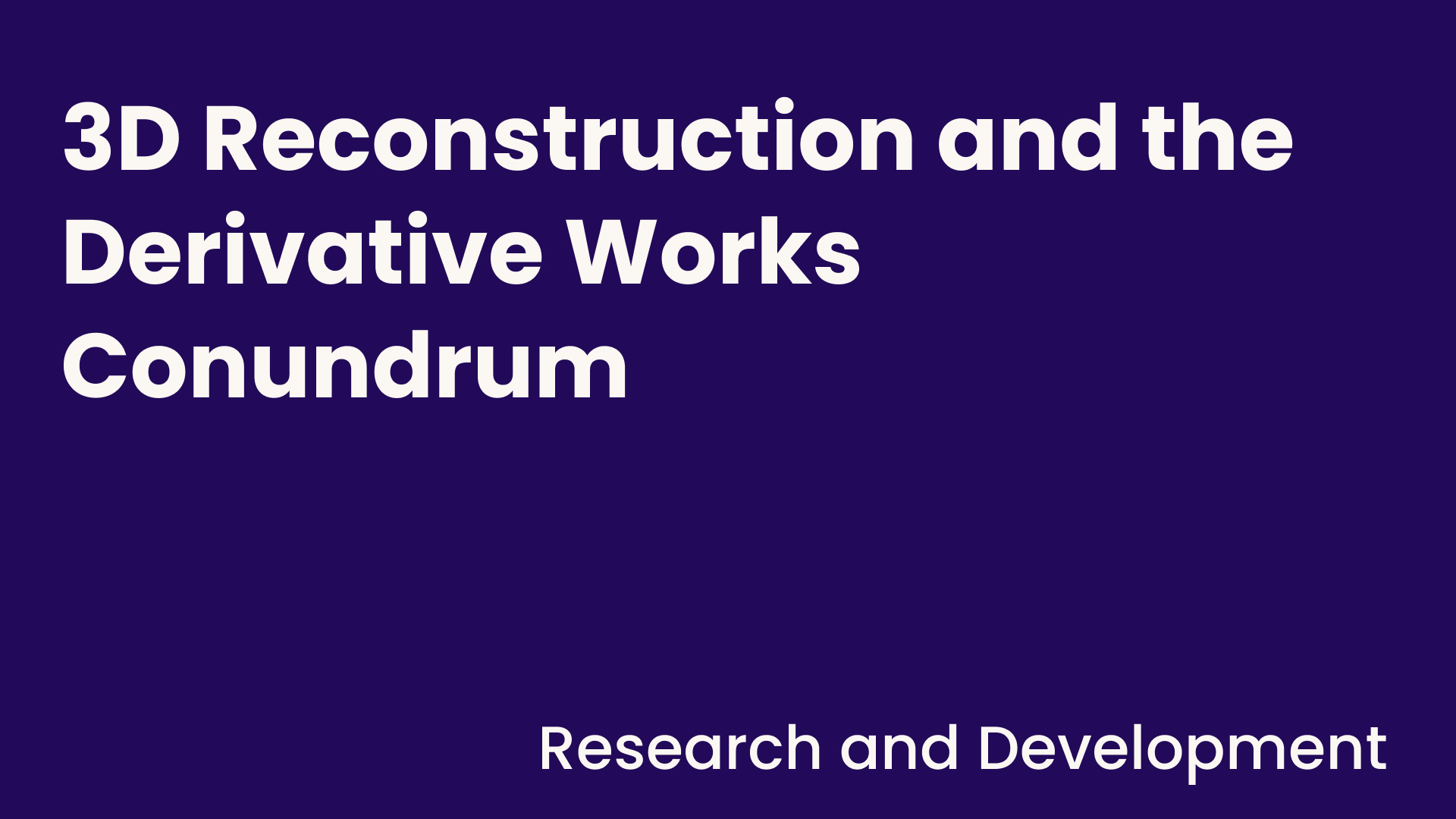One function of the XReco platform is to transform ordinary 2D images and videos into immersive 3D models using cutting-edge AI techniques like Instant NGP, NeRFs, and 3D Gaussian Splatting. But with this innovation comes a critical question: when a 3D model is generated from copyrighted 2D material, is it a derivative work or an independent creation? In our latest blog post, we explore the technology, the law, and what it means for the future of AI-powered 3D content.
3D outputs: independent or derivative works?
XReco platform allows the generation of 3D models from 2D content, via the implementation of s 3D reconstruction services that are embodied in its central hub, the Orchestrator. Those employ various technologies, including AI-based techniques, such as Instant NGP, NeRFs or 3D Gaussian Splatting. On that basis, ordinary digital images and videos, such as pictures from landmarks, monuments and other real-world objects, obtain novel utility, as they can be used as input material for generating 3D outputs (Fig. 1).
At the same time, it is very likely that images and videos used for 3D reconstruction purposes are subject to copyright protection. If this is the case, the copyright owner holds strong exclusive powers that allow control over use and exploitation of this content, including its reproduction and public dissemination. Accordingly, apart from issues relating with the legal status of AI-training for 3D reconstruction services and the need for tailor-made licensing solutions with regards XReco marketplace already explored elsewhere on the XReco blog, a core issue for the deployment of 3D reconstruction services refers to the legal relation between underlying 2D content and resulting 3D content. In copyright law terms, this refers to the question of whether the generated 3D output is a derivative work, deriving from the ingested 2D content. This question takes on far greater importance in the XReco context than it does in most other scenarios involving AI-generated content, because the generation of 3D content will always be based on the specific pre-existing 2D content that has been ingested for 3D reconstruction purposes.

Figure 1: Examples of 3D reconstructions based on ordinary 2D inputs.
Why does it matter?
The qualification of 3D models as derivative works entails several legal implications from a copyright law perspective. To name but a few, the generation, use and dissemination of a derivative 3D model will require previous authorization from the owner(s) of ingested 2D content, typically granted by means of a license. In the absence of such authorization, consequences are far-reaching. The generated 3D model would be considered as an infringing content and its generation could trigger severe sanctions against the user of that content and, possibly, against the operator of the 3D reconstruction services. Crucially, the answer to the derivative-work question influences XReco’s rights management strategy. In that regard, Theodoros Chiou of IPR contributed to XReco’s legal research, providing insights to help navigate this complex and largely uncharted question.
Which legal research avenues have been explored?
Legal research turned towards the exploration of different paths. Having as a starting point the EU Copyright Law, the focus was put on determining which economic right established within the EU acquis (essentially: the Infosoc Directive) is relevant for attesting the copyright-significant derivation of 3D outputs. In the absence of a horizontally-harmonized right of adaptation, research focused on the relevance of the reproduction right (art. 2 Infosoc Directive). In order to support this approach, a comparative analysis of selected national laws of EU member states has been undertaken, pointing at the legislative approach vis-à-vis the definition of derivative works and the demarcation between reproduction and adaptation right.
Moreover, another research path focused on the significance of the recognizability criterion, as shaped — and continuing to evolve — within CJEU case-law, in order to assess the derivative nature of a 3D model. In the XReco context, this criterion would mean that the use of 2D content would lead to the generation of a derivative 3D output, insofar elements of the protected expression of employed 2D content are visually recognizable within that 3D model.
In addition, research focused on the role of dimension shifting that characterizes the generation of 3D models on the basis of 3D reconstruction. In that regard, focus has been put to the “distance” criterion, as expressed in national laws’ traditions, according to which, derivation from 2D content would not be established insofar the 3D model is sufficiently distanced from pre-existing 2D content in a way that incorporated pre-existing elements “fade away”.
Last, research explored the limits of the reproduction right, under the light of the copyright principle of idea/expression dichotomy and according to the interpretation offered by relevant CJEU case law. Derivation would be established as long as protected elements of 2D content expression are copied within 3D model. On the contrary, sole taking of unprotected elements that are embodied in 2D content, such as mere facts or data, would not be relevant from a copyright perspective and would not lead to the generation of a derivative 3D model.
What is the main finding?
Answering the question of whether a 3D model generated by means of XReco’s 3D Model reconstruction services is a derivate work of the 2D images or videos employed requires case-by-case assessment. However, given the objectives of 3D reconstruction and the emphasis in extracting information related with the represented object that will take the form of a 3D model, it could be argued that XReco 3D outputs will routinely utilize unprotectable mere facts and data that are embodied within 2D inputs and pertain to the depicted real-world object and not to the representation itself. In that case, protected elements of 2D inputs’ expression will not be reproduced within the 3D output and 3D output will not be 2D input derivative.
Summary
Having as a starting point the EU copyright law, XReco’s legal research provides answers on the complex question of whether the 3D models that are generated by means of XReco’s 3D reconstruction services qualify as derivative works. Findings show that this a case-dependent question, which however may routinely be answered in the negative, insofar 3D models employ only unprotected facts and data embodied within preexisting 2D content.
About Theodoros Chiou and IPR
Dr. Theodoros Chiou is a qualified lawyer, adjunct lecturer, and researcher in Intellectual Property, IT, and Media Law, with expertise in the intersection of AI and copyright, based in Athens, Greece. He participates in the XReco Project in the capacity of natural person beneficiary, as owner of the law firm IPrightsGR (in short: IPR). Within XReco, IPR’s legal research mainly focuses on copyright law issues related with rights management and monetization, including legal status of AI training and licensing of AI-generated 3D outputs, within the data sharing platform development and integration work package (WP3).


Follow XReco!